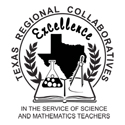
Interested in becoming a part of the TRC?
The best way to get involved with the TRC is to contact a one of our Regional Collaboratives directly. The TRC is organized geographically across the state, with at least one Collaborative located in each of the 20 educational service regions. Some urban areas have several math and science Collaboratives, while rural areas may only have one Math Collaborative and one Science Collaborative.
Keep in mind that Collaboratives across the state differ in the specific application process and programs offered to teachers. Our Collaboratives generally start delivering services to teachers in May and begin recruiting teachers in winter and spring.
Participation by Teachers
There are two levels of teacher participation in Regional Collaboratives. Science Teacher Mentors (STMs) and Math Teacher Mentors (MTMs) represent the highest level of commitment (100 hours). Cadre Members (CMs) represent the second tier of commitment (12 – 24 hours). Standard requirements and benefits for mentor teachers are described below.
STMs and MTMs commit to…
Click to view
- Completing 100 hours of professional development over the summer and school year.
- Attending a summer institute of at least 40 hours in the first summer of the grant period.
- Completing both a pre-test and post-test of their content knowledge. Data are aggregated at a program level.
- Providing support and mentoring for CMs on their campus or in their district to share what they have learned in the TRC.
- Providing the TRC with classroom level STAAR data if applicable at the end of the school year. Data is reported at the classroom level and does not include any individually identifiable student information.
- Keeping school administration informed about the Regional Collaborative professional development activities and their impact on student achievement.
STMs and MTMs benefit from…
Click to view
- Professional development at no cost to the teachers.
- Improvements in content knowledge and instructional skills.
- Collaboration and networking with like-minded teachers who are working to improve their practices.
- Free instructional materials for implementing the lessons addressed in professional development.
- Leadership building opportunities through presentations and mentoring.
- Connections with content area professors in higher education.
- Access to additional grant and training opportunities supported by the TRC state office at UT Austin.
Campus and District Participation
There are also two ways a campus can participate in the TRC. An IMMERSION campus commits that every teacher at a specific grade level (such as grade 8 science or Algebra I) will participate in TRC professional development. This includes at least one teacher who will serve as an STM/MTM (100 hours) and all other teachers participating as additional STMs/MTMs or CMs. CMs on immersion campuses who teach at the immersion grade level are required to participate in at least 24 hours of professional development. The Regional Collaborative Project Director identifies the targeted immersion grade level each year.
If a campus or grade level is not designated as immersion, CMs are only required to receive 12 hours of professional development.
Administrators…
Click to view
- Benefit by growing a group of teacher leaders (STMs and MTMs) that can help to guide professional growth for all teachers.
- Benefit from teachers receiving research-based, sustained, high-intensity professional development at little to no cost to their institution.
- Benefit from the instructional materials provided at no cost to TRC teachers.
- Commit to providing STMs and MTMs with the time necessary to participate in follow-up professional development during the school year.
- Commit to giving STMs and MTMs time and a structure to share what they have learned in the TRC with their CMs.
- Commit to providing the TRC with campus level STAAR data for statewide evaluation purposes.
Cadre Members (CMs)…
Click to view
- Commit to working with their STM or MTM to share TRC training with other teachers at your school.
- Commit to participating in at least 12 hours of mentoring/professional development if they are a non-immersion school.
- Commit to participating in at least 24 hours of professional development if they are on an immersion campus.
- Benefit from working with their colleagues to support improved instruction as a team.
- Benefit from having first access to additional opportunities (professional development, grants, student opportunities) that are offered to TRC teachers.
Contact your local TRC Project
Each Regional Collaborative Project Director can provide more details about the program focus and requirements for the year. Please don’t hesitate to contact them to learn more about the professional development and mentoring opportunities offered by the TRC.
The TRC CS Network is now WeTeach_CS
 The Center for STEM Education has spun-off the TRC Computer Science Network into a new program. WeTeach_CS seeks to expand and improve CS education in Texas, as part of the #CS4TX and #CSforAll iniatives, by helping to certify new CS teachers in Texas and provide support through ongoing professional development.
The Center for STEM Education has spun-off the TRC Computer Science Network into a new program. WeTeach_CS seeks to expand and improve CS education in Texas, as part of the #CS4TX and #CSforAll iniatives, by helping to certify new CS teachers in Texas and provide support through ongoing professional development.
Information about the programs of WeTeach_CS can be found on weteachcs.org.





